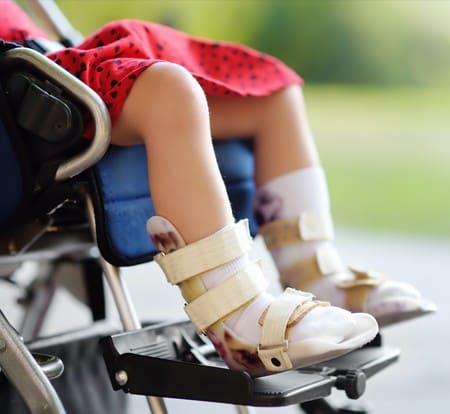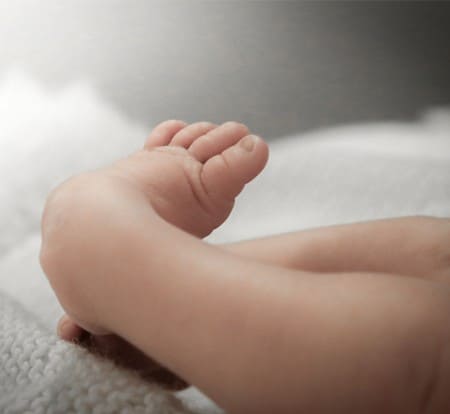

Pediatric Orthopedics surgery is a specialty that deals with the treatment of musculoskeletal disorders. Pediatric orthopedic surgeons treat bones, muscles, tendons, ligaments, and joints in infants, children, and adolescents.
Amandeep Hospital provides the best pediatric orthopedic care delivered through the expert hands of expert ortho pediatricians and pediatric surgeons. “Your child’s health is our priority.”
Our Pediatric Orthopedic team provides a comprehensive surgical and non-surgical treatment for a broad spectrum of pediatric orthopaedic conditions. Dr. Sudanshu Bansal MBBS, D(Ortho) DNB(Orthopaedics) is a pioneer in pediatric orthopedics.
His vast experience, excellent training, and compassionate approach comfort his patients and help them recover faster.
Department of Paediatrics at Amandeep hospital has state-of-the-art digital x-ray facilities for the convenience of patients and offers the following specialized surgeries:
Gentle stretching, Neurodevelopmental therapy, occupational therapy, gait training, and speech therapy are essential for the treatment of Cerebral Palsy. Regular gentle stretching may help the muscles become more flexible.
Botulinum toxin with or without plaster/ splints can be helpful in dynamic contractures. Soft tissue releases and multi-bone surgeries may require in some neglected cases to improve the body function and appearance of the child.


Ponseti Clubfoot Cast Treatment is a simple technique used to quickly correct the clubfoot deformity of newborns without any significant surgical intervention. Ponseti casting treatment is necessary as it produces a rigid equinus deformity that allows the talus to bear weight and eventually reduce the dislocation of the medial aspect of the ankle joint, a characteristic feature in clubfoot. In addition, the Ponseti method aims to impose contracture on the soft tissues and thereby increase the level of correction.
A clinical assessment is recommended in newborns with a significant risk of hip instability, in the presence of risk factors in the family history, and symptomatic neonates. In addition, the authors advocate a strategy of early ultrasound screening for all symptomatic neonates and in the presence of risk factors in the family history.
The Pavlik harness is a specially designed hip brace used with diapers for non-surgical treatment of developmental dysplasia of the hip (DDH). The goal of the saddle is to lessen stress on the developing hip joint, which in turn decreases the risk of the condition progressing to need surgical repair.
Perthes disease is a hip problem that usually affects children. It can lead to permanent damage and disability if it goes untreated. Perthes disease sometimes resolves independently with rest and physical therapy. Still, treatment may require in some cases, such as surgery or replacement of the hip joint with an artificial joint.
Medical experts recommend optimal hip function in treating Perthes syndrome, so a treatment method using a simple concept called containment is applied. During this treatment, a Kalaz ring with a hip spica cast helps to contain the head of the femur within the affected hip joint as much as possible for four to six weeks.
Slipped capital femoral epiphysis is a disorder in which the head of the thigh bone becomes displaced from the growth plate at the top of the bone. A slipped capital femoral epiphysis is an uncommon condition, occurring more commonly in obese females, often in one leg only, and rarely after the teen years.
Surgical fixation is a joint treatment plan for displaced midshaft fractures. This method helps to maintain joint function, prevent early osteoarthritis, and avoid secondary deformities.
An external fixator is an artificial frame formed by wires and pins, which can treat long bones’ angular, torsional, and translational deformities, especially the lower ones.
The Ilizarov method of bone transport is a reliable, functional system for dealing with trauma and deformity when other means have failed. The Ilizarov apparatus is a comprehensive system with modules that create a solid vertical implant.
The Orthofix System is a modular system that enables the surgeon to perform either one or multiple-level Deformity Correction.
Pediatric Trauma is a traumatic injury that happens to an infant, child, or adolescent due to anatomical and physiological dissimilarities between children and adults. Pediatric Orthopedic Doctor manages pediatric trauma in an adult trauma system with the availability and backup of pediatric surgery expertise in a non-specialized pediatric trauma center.
AIS is a spinal deformity treated by exercise or bracing to prevent the progression of the curvature. AIS can be successfully managed with a combination of physical therapy, bracing, and observation. In addition, surgical correction can be a treatment option for adolescents with progressive AIS.
Brachial plexus birth palsy is a sort of neural injury sustained during delivery. It can result in lifelong functional deficits such as nerve damage and poor arm functions, such as loss of grip strength and range of arm motion.
Physiotherapy is very effective in most hand surgery cases. Active physiotherapy involving the use of your hands is an essential part of therapy. However, you can use passive physiotherapy also where you cannot actively move the wrist, especially in the early postoperative period.
We use cookies to enhance your experience. By clicking "Accept", you agree to our use of cookies.